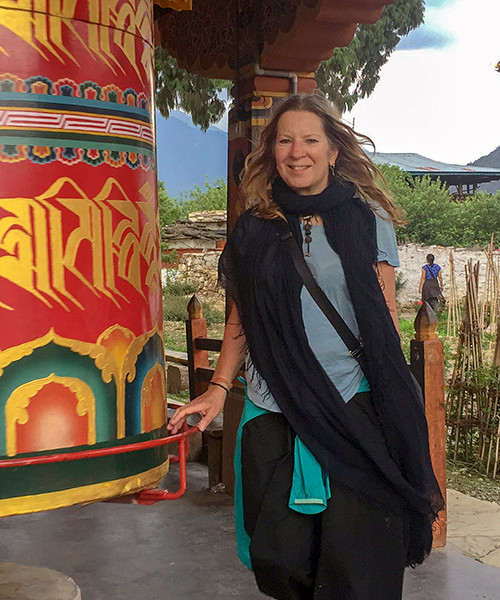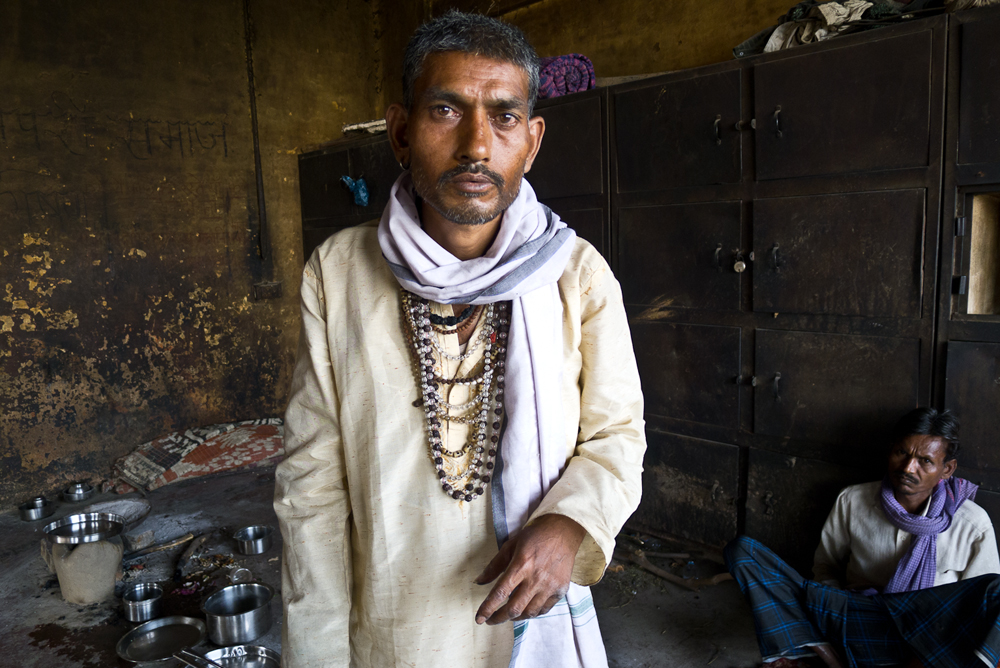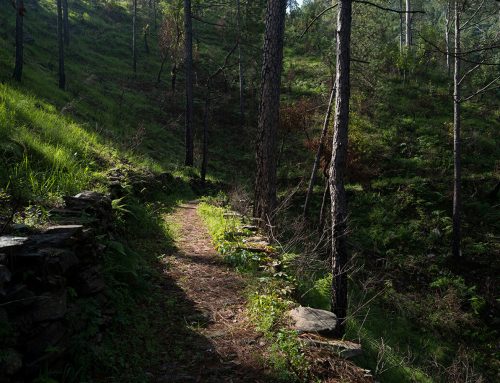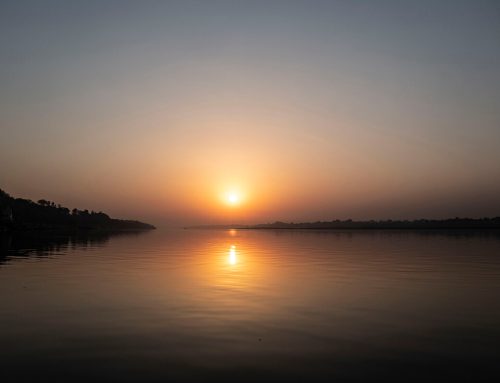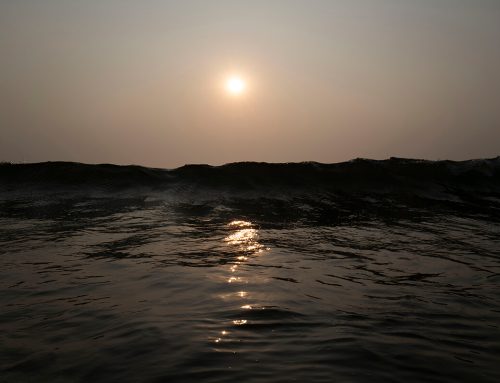F I R E

Varanasi, India
Varanasi is searing hot and the hidden streets in the old city are the coolest place to be. I’m sipping a refreshing pomegranate and coconut lassies at the famous Blue Lassi shop, watching the lassi walla churn the curd with a big stick, spoon it into a disposable clay pot, the yogurt spilling over the edges, and decorate it with fruits, seeds and nuts.

Blue Lassi, Varanasi, India

Blue Lassi, Varanasi, India

Blue Lassi, Varanasi, India
Nuria says, ‘Did you see the corpse on the corner?” Suddenly, I hear someone shout ‘Rama Nam Satya Hei.’ I expect to see a dead body on the street, but it’s a funeral procession carrying a corpse wrapped with sparkly red and gold fabric, and marigold garlands, on decorated bamboo pier (plank). Everyone gets out of the way. I feel a physical contraction in my body and I realise how rare it is to ever see a corpse in the western world. ‘Ram Nam Satya Hei’ is the final mantra before cremation and implies that the corpse no longer sustains the truth (breath), which is Ram Nam, and consequently has no value whatsoever. For Hindus, the truth is that we all die, leaving our physical body behind in the ashes, but the Atman, or soul, will either return to worldly existence in the form of a new body or, if you’re lucky enough to die in Varanasi, you’ll attain Moksha and return to pure consciousness ending the cycle of rebirth in Nirvana. Even though I see death all around me, and intellectually I know that we all eventually die, somewhere deep inside I still think it won’t happen to me.

Blue Lassi, Varanasi, India
The street leads to the largest burning ghat, Manikarnika. Probably all streets lead to Manikarnika as it is the center of the city. There is a saying in Varanasi that the ghats are not there for the city, but the city exists for the ghats. The British finally understood this after years of attempting to unsuccessfully outlaw the burnings. We walk through the narrow lanes lined with spiritual tourists, dreadlocked Israelis, ash-smeared aghoris, wallas of every description balancing god-knows-what on their heads, well–fed goats, dogs like walking skeletons with horrid skin diseases, lazy cows and hard-working black buffalos, rusting bicycles, youth on aggressive honking scooters, and many men drinking chai. Above are glittering temples, spires and domes, and wooden doorways with decorative carvings from another time. Beneath my feet are eons of filth and horrid scents rise up, soon to be washed away by sweet fragrance of puja flowers.

Varanasi, India

Blue Lassi, Varanasi, India

Blue Lassi, Varanasi, India
I can tell we’re close to the Ghat when the shops sell death supplies and monumental piles of dark brown wood, hacked roughly to lengths of about five feet, are stacked seven and eight feet high, ready for the fires below. There is an endless cycle of slight-built men carrying armloads of wood. So much wood, it looks like a city of wood… a fallen ‘forest of bliss.’ We’re down wind and can feel the heat of the fires and ash. My eyes sting as the air is heavy with the smells of burning wood, incense, and a somewhat disturbingly sweet aroma. Suddenly, the zigzag stone ghat steps appear and the whole of Manikarnika comes into view. There are hundreds of men. No women here except for a few foreign tourists. Only men take part in the cremation ceremony as no one can cry or the soul is held back. Even the wife of the deceased stays at home. Nuria is a bit overwhelmed by the heat, but mostly the men, and looks like a ghost. I sit her down in the shade with a bottle of water, while I explore further. Part of my sadhana is the Mahasmahana, the great creation ground.

Varanasi, India

Varanasi, India
The Skanda Purana (IV.30.103-104) explains the word: ‘Maha’ the great and ‘Sma’ means corpse, and ‘shana’ means final rest. In the Vedic tradition, important life events are marked by religious ceremonies. The final ceremony after death is Antyeshti. Anta literally means ‘end’, and eshti is ‘wish, desire, seeking to go towards.’ This is the final Yagya (sacrifice), when the body itself is offered to the Agni (fire) – the final purification rite to reduce the bonds between the subtle body and the gross body. In the Antyeshti ceremony, the body’s five basic components – known as panch bhutas – prithvi (earth), jal (water), tej (fire), vayu (wind) and akash (space) are returned to the universe, thus maintaining the cosmic equilibrium.

Varanasi, India
For a Hindu, existence does not begin with birth and end with the death of the physical body. There is an indweller called jiva (soul) that manifests in a given body in order to experience the results of its previous karmas. At the time of death, the jiva gives up its current form to assume another more suitable one to continue its experiences based on the results of prior karmas. Antyeshti serves to dispose of the body, equips the soul for the scary transitory journey to Yamaloka, and frees the soul from the pollution caused by death. Until this ritual is performed, the soul is believed to remains on earth, where it flits about restlessly as a preta (ghost). Ultimately, Hindus aspire to no more rebirth, and in most places, this is only possible for those beings who have worked through their past karmas and have lived a life of merit. But here in Varanasi cremation at Manikarnika Ghat ensures liberation and the end of worldly existence.
O Jiva (Soul)! After they death, may all the components of they body be merged into the five elements. May the power of thy sight be absorbed in the sun and thy breath be absorbed in the air. May thy other parts be absorbed in appropriate elements. And in accordance with the meritorious deed thou hast performed here, may thy spirit dwell in the appropriate body. – The Rig Veda

Manikarnika Ghat, Varanasi, India
Varanasi is the city of death and people come here to die from all over India, and as far away as London. There is a continuous stream of corpses and the fires burn continuously. Everywhere I encounter ghatias, the ghat-priests. They are Doms, the lowest of the ‘untouchable caste,’ responsible for performing the funeral rites and dealing with dead bodies. Apparently, they are all part of one original family that has been in charge of the Ghat for several thousand years and, not surprisingly, they’re members are among the 10 wealthiest families in Varanasi. If you don’t like their price, they’ll tell you take your corpse somewhere else. More than 38,000 corpses are cremated here in a year. Over 100 a day, and the fires burn continuously. Around 100 families comprise a clan each have a specific task – selling the wood, collecting the money, stoking the fires of the dead, and tending to sacred fire that has burned for 3,000 years and is the source of fire for all the cremations. They are part of the paradox of life here; they perform a duty that makes them the most polluted of the untouchable casts, yet they are indispensable for the most sacred ritual in Hinduism.

Manikarnika Ghat, Varanasi, India

Manikarnika Ghat, Varanasi, India

Manikarnika Ghat, Varanasi, India
There is an air of casualness to it all, no doubt from millennia of routine, yet there is a level of organization and attention to detail that simply staggers my mind. Everyone is watching me and that I’m followed wherever I go. It might be my camera, or the innate opportunism to make money from tourists. Photography is strictly forbidden here, or is it? One Dom tells me I can shoot anything except the bodies. No problem. Another says ‘no photography without the official documents.’ In truth, pay a little money and you can do what you want. I end up in a high wooden tower next to the burning place and watch the ceremony unfold.

Manikarnika Ghat, Varanasi, India

Manikarnika Ghat, Varanasi, India
A dozen fires burn in shallow ashy pits. People say that at the end everyone dies equally, but even here there are separate areas for rich, middle class and poor people, and the size of the pyre depends on how much wood you can afford. The death ritual starts with the body facing south, the abode of Yama the god of Death. Then, the feet, or sometimes the entire lower half of the body, is soaked in the river to prevent prana (the vital principle) from leaving the body inauspiciously through one of its lower openings. The chief mourner, who is usually the eldest son, with his head shorn and dressed in white, walks five times around the body to represent the five elements that are given back to their source. He pours Ganga water into the mouth of the deceased and puts sandalwood and butter oil on the body. He lights the pyre with reeds lit from the eternal sacred fire. The ghatias then tend the pyre by turning the logs to ensure the burning is complete. It takes 350kg (750lbs) of wood to burn a body properly and the cremation lasts about three hours. In the Aghori tradition, the skull of the deceased is smashed, at which time the soul leaves in the form of a preta (wandering ghost), on its postmortem journey. For the first days after death, the spirit exists in the form of a preta, a wandering ghost, after which it’s conceived as an ancestor spirit, a pitr. The spirit’s journey through the Yama’s realm continues during the first year after death until it safely reaches the ‘pitr loka’ the abode of the ancestors.
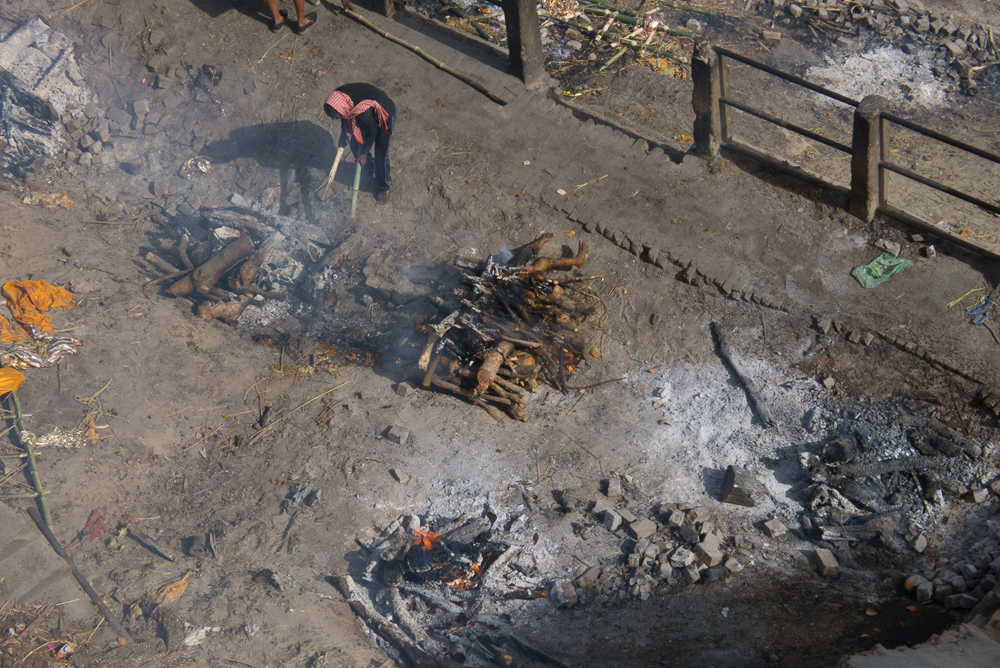
I’m looking at this scene through my 300 mm lens when, suddenly, I see a half burned man with his legs sticking out of a pyre. It’s a truly disturbing and shocking sight and I feel the image sear the inside of my mind – something that will remain with me for a long time. Those who can’t afford the required amount of wood, leave behind half burned body parts, which are then thrown into the Ganges, if not eaten by dogs. The sternum and ribcage of men and pelvis on women rarely burn to ash. Bizarrely, special snapping turtles have been bred for this purpose and are released in the river where they have been taught only to consume dead human flesh, but not bother swimmers and bathers. These turtles consume about a pound of flesh a day and can reach a size of 70 pounds. The only exceptions to cremation are Holy men, pregnant women, people with leprosy or chicken pox, those bitten by snakes, those who have committed suicide, and children under five. Instead, they weighted down with a stone and lowered into the Ganges. Since the 90s, the Indian government has set up electric crematoriums in most urban centers, including Varanasi, an option for poor people as it is far less expensive, but still most people come here to receive the ancient funeral rites. It is really difficult for India’s poor to afford enough wood for their death. They have to begin saving in their youth.
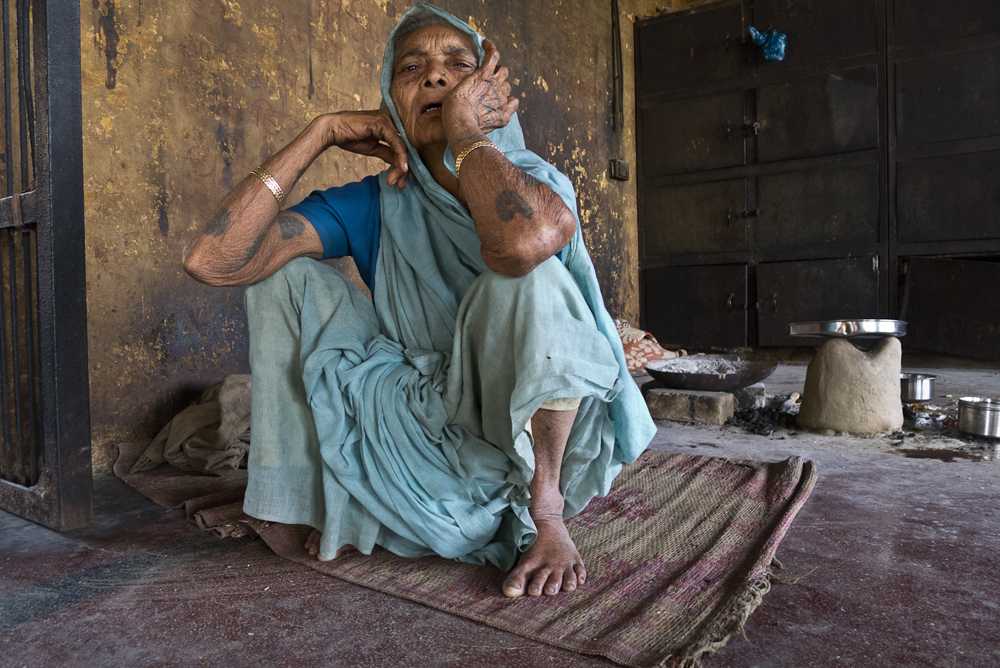
Near the ghat are numerous hospices where the elderly and terminally ill come to die and spend their last moments on the banks of the Mother Ganges. I feel truly honoured to be present in this ‘holy of holiest places,’ where our world and the next world meet. I decide to buy some wood for a poor person and help to create an auspicious end to their earthly life. I take a long look into the eyes of this rather well-groomed ghatia, searching for true compassion, and wonder if he’ll just pocket my money, but then realise all I can do is offer the gift. After that it’s his karma. I give the money to an old woman who manages the lodge and nurses the old people who live out their days in the hospice. I receive their blessing and return to the ghat steps where I left Nuria. As we turn our backs on Manikarnika we feel the strong force of spiritual magnetism, the sacred bondage between place and person. A power that enhances the sensitivity to the ‘crossings’ from this world to the word beyond, where humanity meets divinity. We’re certain that the Hindu faith in the sacred fire will keep Manikarnika burning bright for centuries to come.
“The Atman (soul) can never be cut to pieces by a weapon, nor burned by fire, nor moistened by eater, nor dried by the wind.” – Bhagavad Gita (2-23)

Manikarnika Ghat, Varanasi, India
Continued in Part Four: E A R T H
Heather Elton is a yogini, writer and photographer living in London.

